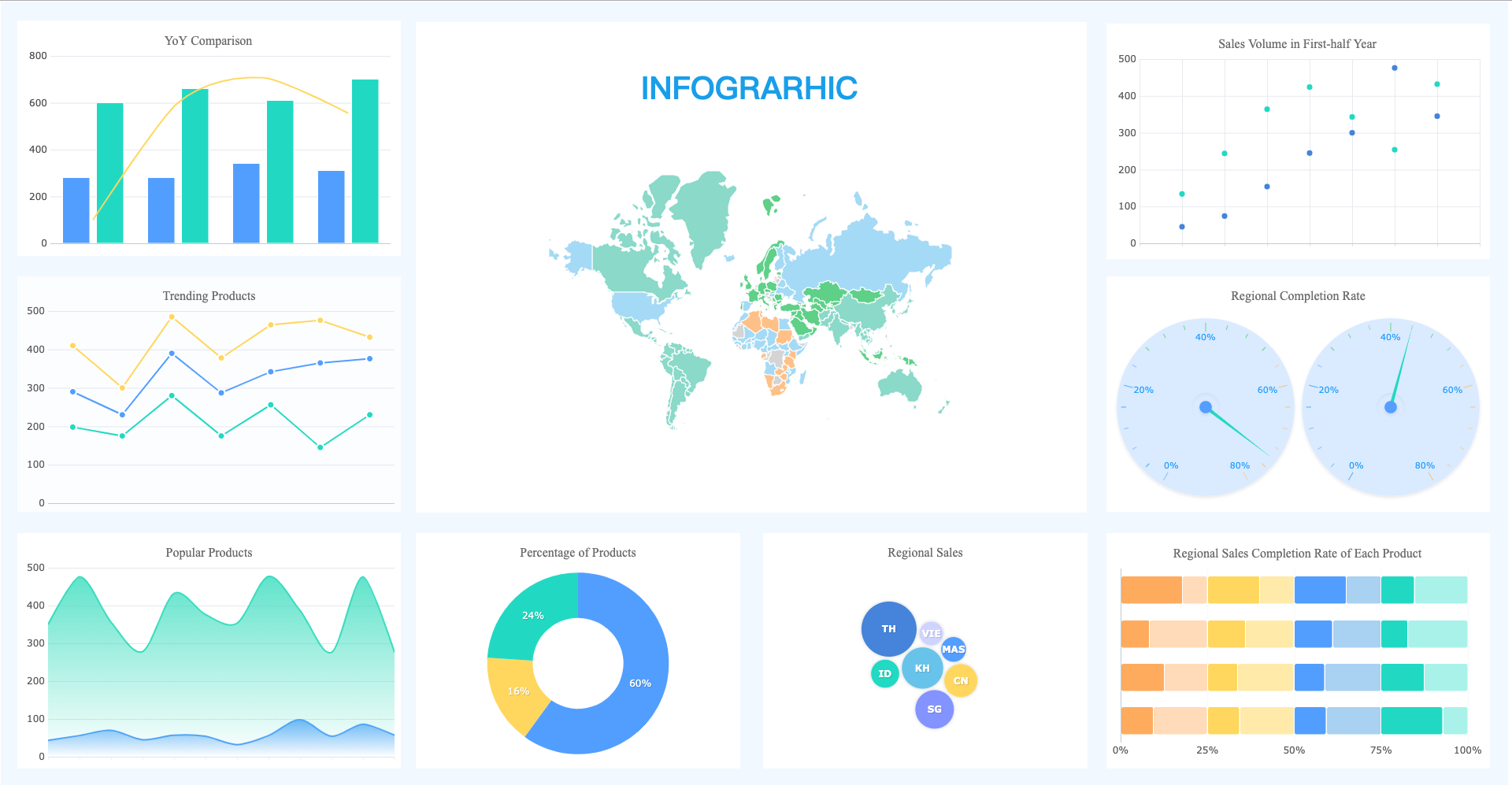

In particular, when you only have one number to show, just displaying the value is a sensible approach to depicting the data. Tables and single valuesīefore moving on to other chart types, it’s worth taking a moment to appreciate the option of just showing the raw numbers.

We most commonly see box plots when we have multiple groups to compare to one another other charts with more detail are preferred when we have only one group to plot. The positions of the box and whisker ends show the regions where the majority of the data lies. Box plotĪ box plot uses boxes and whiskers to summarize the distribution of values within measured groups. Scatter plots are also great for identifying outlier points and possible gaps in the data.

Scatter plots are a versatile demonstration of the relationship between the plotted variables-whether that correlation is strong or weak, positive or negative, linear or non-linear. Scatter plotĪ scatter plot displays values on two numeric variables using points positioned on two axes: one for each variable. Multiple line charts can also give rise to other related charts like the sparkline or ridgeline plot. It can also expose overall trends, to help the reader make predictions or projections for future outcomes. Movement of the line up or down helps bring out positive and negative changes, respectively. Line charts show changes in value across continuous measurements, such as those made over time. Horizontal bar charts are a good option when you have a lot of bars to plot, or the labels on them require additional space to be legible. Bar charts can be oriented vertically or horizontally vertical bar charts are sometimes called column charts. In a bar chart, values are indicated by the length of bars, each of which corresponds with a measured group. So we’ll start off with four basic chart types, one for each of these value-encoding means. In his book Show Me the Numbers, Stephen Few suggests four major encodings for numeric values, indicating positional value via bars, lines, points, and boxes. Guidance on when to select each one based on use case is covered in a follow-up article. With these charts, you will have a broad toolkit to be able to handle your data visualization needs. In this article, we’ll provide an overview of essential chart types that you’ll see most frequently offered by visualization tools. What are the types of metrics, features, or other variables that you plan on plotting? Who is the audience that you plan on presenting to – is it just an initial exploration for yourself, or are you presenting to a broader audience? What is the kind of conclusion that you want the reader to draw? Your choice of chart type will depend on multiple factors. Often, the most difficult part of creating a data visualization is figuring out which chart type is best for the task at hand. There are countless chart types out there, each with different use cases. Visualizations of data can bring out insights to someone looking at the data for the first time, as well as convey findings to others who won’t see the raw data. Charts are an essential part of working with data, as they are a way to condense large amounts of data into an easy to understand format.


 0 kommentar(er)
0 kommentar(er)
